Discover the art of mud bird nest identification with our comprehensive guide. explore the uniqueness of mud nests. from intricate to diverse bird species,
Introduction
Overview of Mud Bird Nests
Bird enthusiasts and nature admirers often find themselves captivated by the intricate architecture of mud bird nests. These nests, created by a variety of bird species, stand as testaments to avian engineering prowess. From the delicate cup-shaped structures to the more robust constructions, each mud nest carries a unique signature, reflecting the habits and characteristics of the builders.
The mud bird nest identification journey begins with understanding the diverse bird species involved in this fascinating construction process. While some, like barn swallows and cliff swallows, are well-known for their mud nests, others, perhaps less familiar, contribute to the richness of this avian tapestry. Recognizing the significance of these nests goes beyond mere curiosity—it serves as a valuable tool for birdwatchers and nature enthusiasts.
Significance of Mud Nests
The role of mud nests extends beyond being simple shelters for bird eggs and fledglings. These nests play a pivotal role in avian behavior and reproduction. The choice of nesting materials, including mud, is not arbitrary; it is deeply intertwined with the evolutionary strategies of different bird species. Understanding these nesting habits offers a glimpse into the intricate dance of nature, where each mud nest becomes a unique expression of avian life.
Exploring the significance of mud nests unveils the intimate connection between nesting habits and the diversity of bird species. From providing protection against predators to serving as a canvas for intricate patterns, mud nests offer a fascinating window into the world of avian architecture. The study of mud nests goes beyond mere identification; it becomes a journey into the very heart of bird life.
Birds That Build Mud Nests
Birds engaging in the construction of mud nests represent a diverse array of species, each contributing to the intricate tapestry of avian architecture. In this chapter, we delve into the fascinating world of common and lesser-known mud nest builders, shedding light on the significance of understanding different species for accurate identification.
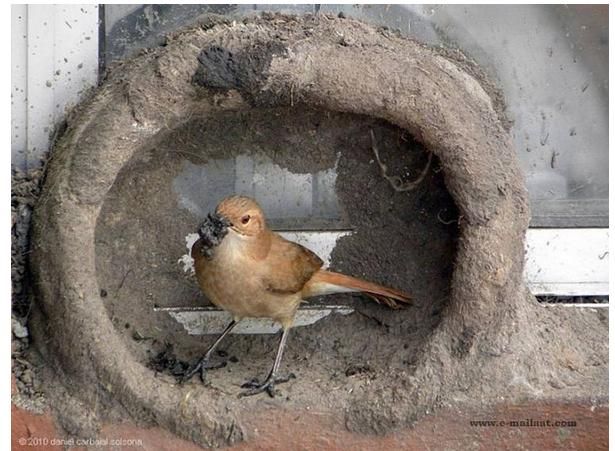
Common Mud Nest Builders
Barn Swallows:
- Characterized by their deep forked tails and agile flight.
- Known for building cup-shaped mud nests often found on the sides of buildings.
Cliff Swallows:
- Recognized by their square-shaped tails and orange throats.
- Build gourd-shaped mud nests, frequently under bridges or overhangs.
Common House Martins:
- Identified by their white rumps and forked tails.
- Construct mud nests with a tubular entrance, typically beneath eaves.
Understanding these well-known species provides a foundation for enthusiasts embarking on the journey of mud bird nest identification. The habits and preferences of these birds significantly influence the characteristics of their nests.
Lesser-Known Mud Nest Builders
Magpies:
- Known for their black and white plumage and long tails.
- Construct mud nests, often lined with softer materials, in trees or bushes.
Thrushes:
- Recognized by their melodious songs and spotted breasts.
- Build cup-shaped mud nests in trees or on ledges.
Flamingos:
- Characterized by their long necks and distinctive pink plumage.
- Construct mud mounds for nesting, often in shallow water.
Exploring these lesser-known mud nest builders unveils the diversity in nest-building behaviors across various environments. From urban landscapes to wetlands, each species adapts its nest construction to suit its unique needs.
Identifying Mud Bird Nests
In the realm of birdwatching and nature exploration, the art of mud bird nest identification is a captivating skill that requires an understanding of the physical characteristics and nesting habits unique to each avian architect. This chapter delves into the nuanced details that define mud nests, unraveling the secrets behind their construction and aiding enthusiasts in accurate identification.
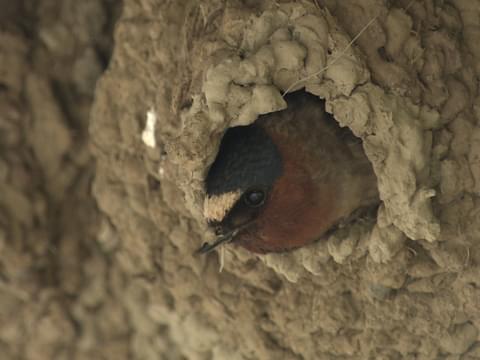
Characteristics of Mud Nests
Size:
- Mud nests exhibit a range of sizes, from compact cups to sprawling structures, depending on the bird species.
- Understanding the size variations is crucial for differentiating between species.
Shape:
- Shapes vary from the classic cup to more elaborate gourd or tubular forms.
- Observing the shape of a mud nest provides valuable insights into the builder’s identity.
Materials Used:
- Birds utilize a mix of mud, twigs, and other materials to craft their nests.
- The specific combination of materials contributes to the nest’s durability and insulation.
Recognizing these physical attributes becomes a skillful art in itself, allowing birdwatchers to discern the architects behind the intricate structures.
Location and Nesting Habits
Urban Environments:
- Some birds, like barn swallows, favor urban structures for nesting.
- Identifying mud nests in urban settings adds an extra layer of excitement to birdwatching.
Natural Habitats:
- Others, such as cliff swallows, opt for natural settings like cliffs or caves.
- Understanding the preferred habitats aids in narrowing down potential bird species.
Delving into the varied locations where mud nests can be found provides crucial contextual information. Whether on a city balcony or a remote cliffside, each location offers clues about the avian architect’s preferred nesting environment.
Mud Bird Nest Identification Tips
Navigating the intricate world of mud bird nests requires a trained eye and a nuanced understanding of identification tips. This chapter serves as a guide for enthusiasts seeking to unravel the mysteries of avian architecture, offering insights into location-based identification and the subtle clues embedded in nest construction.
Location-Based Identification
Geographic Variations:
- Different bird species exhibit preferences for specific geographic locations.
- Understanding regional variations in mud nest construction aids in narrowing down potential candidates.
Urban vs. Rural Nests:
- Birds adapt their nesting habits to urban environments, creating mud nests on buildings.
- Identifying whether a nest is in an urban or rural setting provides valuable context.
Climate Influences:
- Climate plays a role in the type of mud available for nest building.
- Enthusiasts can leverage climate indicators to refine their identification skills.
Clues in Nest Construction
Observing the Process:
- Witnessing the construction process is a valuable tool for identification.
- Different species employ distinct techniques and behaviors during nest building.
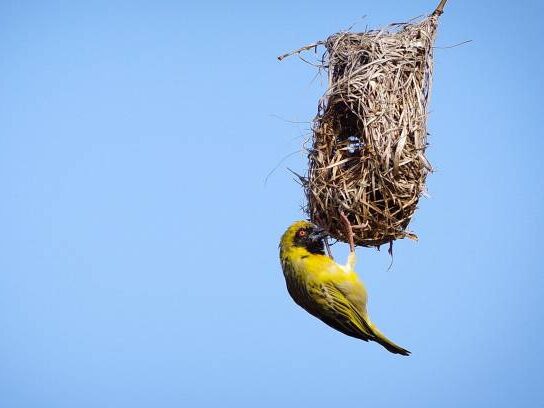
Nesting Materials:
- The materials used offer crucial clues about the bird species.
- Recognizing specific nesting materials, such as types of mud or additional elements like twigs, refines identification.
Nest Shape and Size:
- Each bird species has a unique approach to shaping its mud nest.
- Size and shape variations contribute significantly to accurate identification.
Bird Nest Identification FAQs
In the fascinating world of mud bird nests, curious minds often seek answers to common questions surrounding the identification process. This chapter delves into frequently asked questions, providing valuable insights into the diverse avian architects and their unique nesting behaviors.
What Birds Make Nests Out of Mud?
- Common Mud Nest Builders:
- Barn swallows, cliff swallows, and common house martins are renowned for crafting mud nests.
- Explore the distinctive features of each species and their preferred nesting environments.
- Lesser-Known Avian Architects:
- Discover a variety of birds, including magpies, thrushes, and flamingos, that also showcase the artistry of mud nest construction.
- Uncover the nuances in nesting behaviors across different environments and geographical locations.
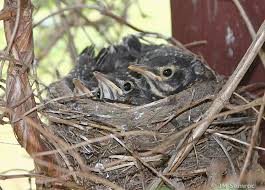
How to Differentiate Between Mud Dauber Nests and Bird Nests?
- Distinctive Features of Mud Dauber Nests:
- Explore the characteristics that set apart mud dauber wasp nests from those crafted by birds.
- Understanding these differences enhances precision in identification.
- Guidance on Visual Differentiation:
- Delve into expert guidance on visually distinguishing between the intricate nests of birds and the architectural wonders of mud daubers.
- Learn to identify subtle clues that unveil the identity of the nest builder.
Advanced Nest Identification Techniques
Birdwatching enthusiasts seeking to elevate their expertise in mud bird nest identification can delve into advanced techniques. This chapter unveils strategies tailored for seasoned observers, providing nuanced insights into the intricate world of avian architecture.
Specialized Observation Strategies
- Time-Based Observation:
- Timing is crucial in birdwatching. Explore the best periods for observing mud nest construction and bird behaviors.
- Understand seasonal variations in nest building, contributing to more accurate identifications.
- Nighttime Observation:
- Some bird species exhibit unique nesting behaviors during the night. Delve into the challenges and rewards of nocturnal birdwatching.
- Equip yourself with the knowledge to identify species that engage in nighttime nest activities.
Technology Integration
- Use of Binoculars and Cameras:
- Leverage advanced optics technology to enhance your observation capabilities.
- Explore the benefits of high-quality binoculars and cameras in capturing detailed features for later identification.
- Digital Sound Recording:
- Birds are often identified by their distinctive calls. Incorporate digital sound recording into your birdwatching toolkit.
- Learn to differentiate bird calls, adding an auditory dimension to your identification skills.
Collaborative Birdwatching
- Online Birdwatching Communities:
- Engage with fellow birdwatchers through online platforms.
- Share experiences, photographs, and observations, gaining collective insights into challenging identifications.
- Citizen Science Projects:
- Contribute to scientific efforts by participating in citizen science projects.
- Enhance your skills while actively contributing to the understanding of bird populations and behaviors.
Habitat Analysis
- Ecosystem Understanding:
- Expand your knowledge of diverse ecosystems and their impact on bird behaviors.
- Learn how different environments influence mud nest construction, aiding in species identification.
- Migration Patterns:
- Understand bird migration patterns and their connection to nesting behaviors.
- Recognize the transient nature of certain species, contributing to more accurate identification during specific periods.
Conclusion
As we conclude this exploration into the captivating world of mud bird nests, it’s essential to reflect on the profound impact these architectural marvels have on avian life. The appreciation of avian architecture extends beyond the mere identification of nests; it is a celebration of the intricate tapestry woven by our feathered friends.
A Tapestry of Diversity
- Species Variation:
- The diversity in mud nest construction is a testament to the adaptability and resourcefulness of different bird species.
- From the meticulous designs of swallows to the artistic structures of magpies, each species contributes to the rich tapestry of avian architecture.
- Environmental Harmony:
- Mud nests seamlessly integrate with their surroundings, showcasing a harmonious relationship between birds and the environment.
- The choice of nesting materials and construction locations reflects a delicate balance between instinct and adaptation.
An Invitation to Exploration
- Encouragement for Exploration:
- Readers are invited to embark on their own birdwatching journeys, armed with newfound knowledge on mud bird nest identification.
- Explore diverse habitats, observe nesting behaviors, and contribute to the collective understanding of avian life.
- Connect with Nature:
- The appreciation of avian architecture is not confined to the scientific realm; it fosters a deeper connection with the natural world.
- Witnessing the construction and habitation of mud nests brings us closer to the intricacies of bird life.
Future Discoveries
- Ongoing Exploration:
- The world of birdwatching is dynamic and ever-evolving. New species, behaviors, and nesting habits continue to be discovered.
- Stay engaged with the birdwatching community, share observations, and participate in ongoing research initiatives.
- Preservation of Habitats:
- As we marvel at the beauty of mud bird nests, let it serve as a reminder of the importance of preserving natural habitats.
- Support conservation efforts to ensure the continued existence of diverse bird species and their unique nesting practices.
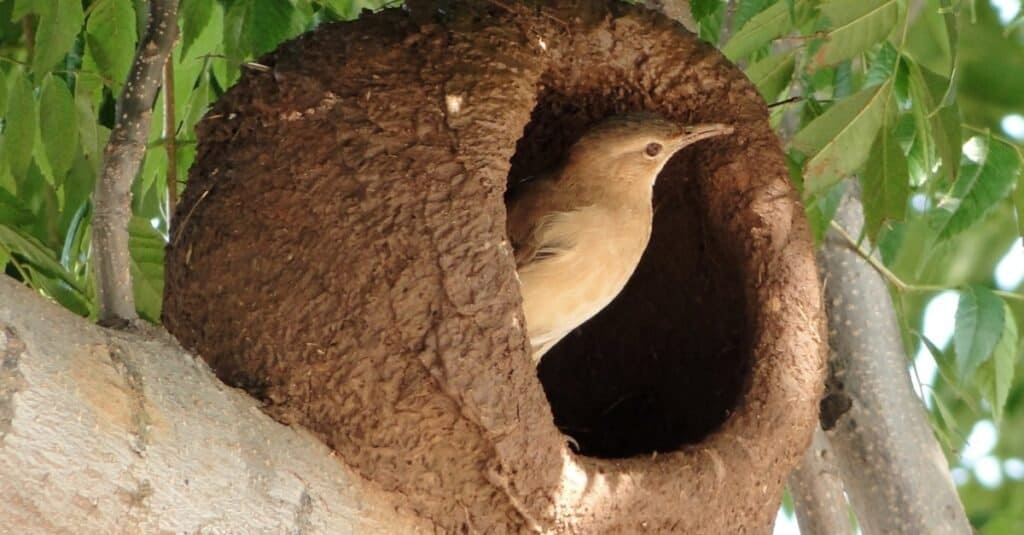
1 thought on “Mud Bird Nest Identification: Unraveling the Secrets of Nesting Marvels”
Comments are closed.